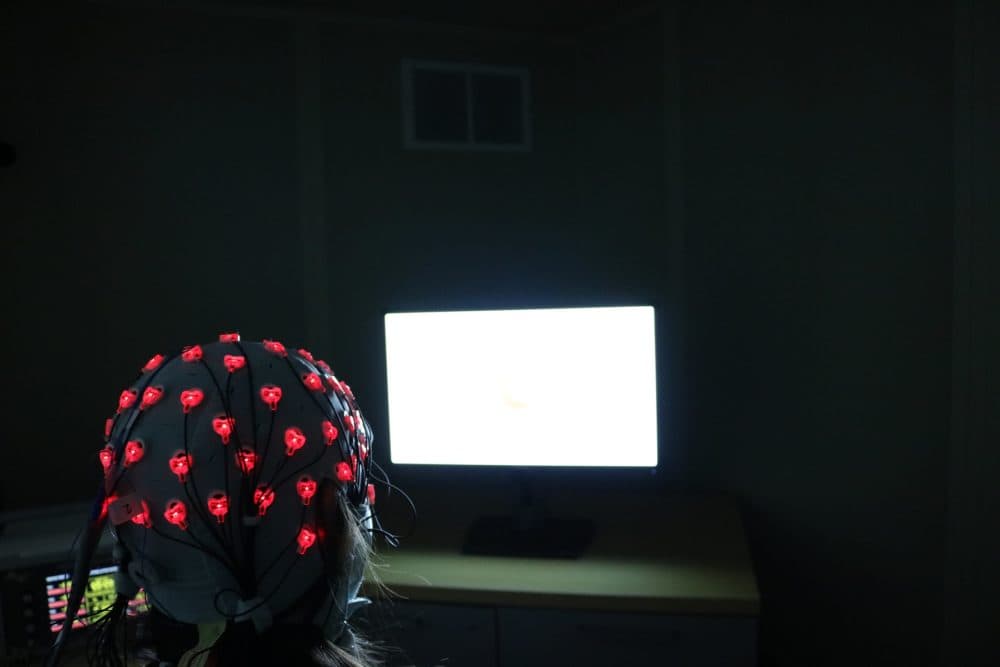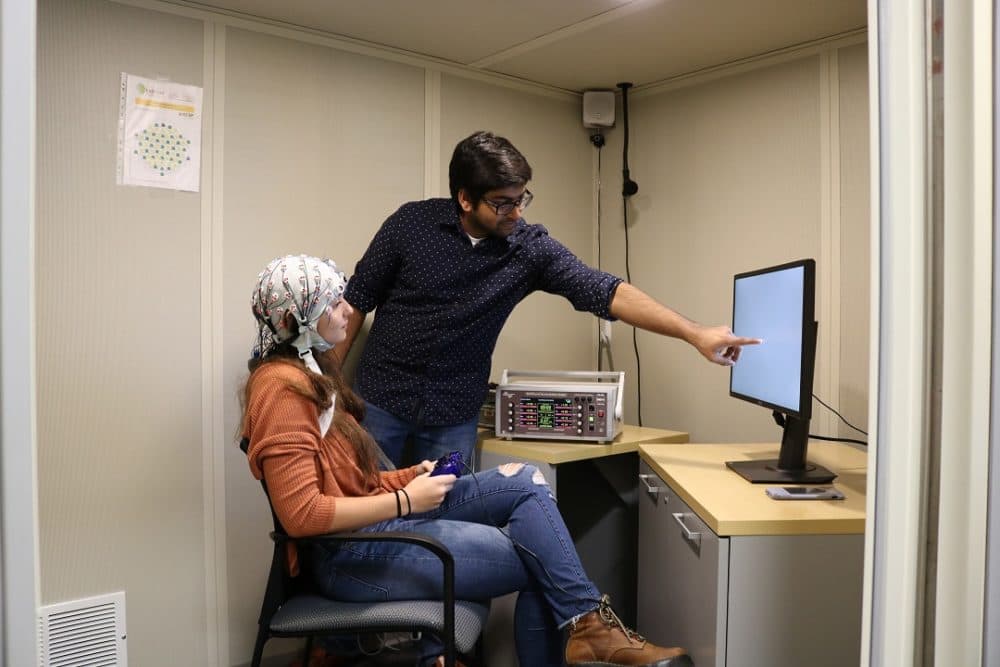Advertisement
BU Researchers Find Zapping The Brain With Electric Current Could Improve Memory In Older Adults

New research has found that zapping the brain with an electric current may be able to reverse the decline in working memory that comes with aging.
In a set of experiments, the results of which were published in the journal Nature Neuroscience, researchers at Boston University sent a small amount of electric current through the brain to try and improve working memory in adults.
In the experiments, a skull cap embedded with electrodes was attached to each participant's head. The cap monitored brainwaves and delivered a weak electrical current while the person performed a working memory task.
Before the stimulation, older adults completed the task with just 80 percent accuracy, while young adults answered correctly 90 percent of the time.
But after the electrical current, older adults' memory matched the 90 percent accuracy rate of the younger participants.
Guest
Rob Reinhart, director of Boston University's Visual Cognitive Neuroscience Laboratory and the lead researcher on the study.
Interview Highlights:
On what our working memory does:
Reinhart: "Our working memory is a space where we problem-solve, reason, plan, do mathematical calculations, and comprehend language. It's classically thought of in the field as a workbench of the human mind or a sketchpad. It's where you're actively working on information and holding that information over a period of seconds."
On whether you can feel the electric current:
"You can barely feel it. What you feel is a slight itching, tingling or poking sensation near the electrodes, but that only lasts for about 30 seconds and then people's skin habituate to that tingling sensation and then you feel nothing."
On why they customized the frequency of the electric current for each person who participated in the study:
"These two brain areas — the prefrontal areas and the temporal area of the brain — that are synchronized to their brain activity is correlated and they're correlated at a particular frequency. We find that sweet spot in your brain network and then we tune the stimulator to that exact frequency, which we then try to isolate this particular working memory brain network ... knowing its preferred frequency."

On how long the improved working memory lasted in the participants:
"We [turned] the stimulator off and saw these effects last for at least 50 minutes. But that's actually just when the experiment ended. Based on our previous work, I've seen aftereffects lasting hours, but we definitely need to do the proper experiments to find out exactly how long the effects last and when they come back down to baseline levels."
On whether this could be commercialized in the future:
"There have to be developments in the technology — making it less bulky, miniaturized, wearable and so on. Before that, we need to do much more basic science in establishing the findings and then porting it over to clinical groups people with a variety of brain disorders such as Alzheimer's and related dementia to see if this could actually help people in a real world setting."
On whether it's safe to use electrical currents to stimulate the brain:
"It's very different from electroshock therapy, which people are familiar with. It's very different from magnetic stimulation. The type of stimulation we're using is electric and it's orders of magnitude weaker. It's an incredibly weak technique to non-invasively stimulate the brain. As a result, you don't see adverse effects. I've recorded thousands of participants over the past several years and the most severe adverse effect is a slight tickling or itching sensation under the electrodes."
This article was originally published on April 09, 2019.
This segment aired on April 9, 2019.

